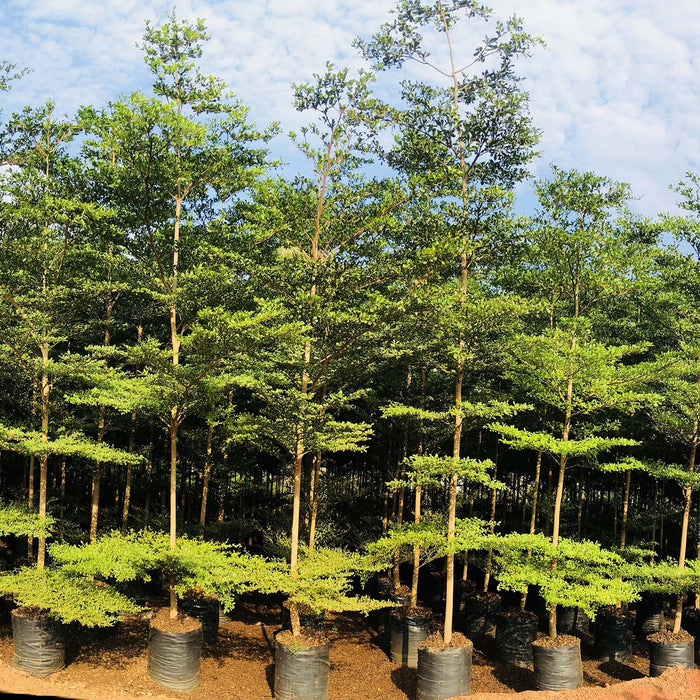
Buy Terminalia Tree, Terminalia arjuna (Arjuna Tree), Terminalia Chebula (Haritaki), Terminalia Catappa (Indian Almond Tree)
Terminalia is a genus of large, tropical trees known for their diverse uses and adaptability. These trees are often found in tropical and subtropical regions, offering shade, beauty, and practical benefits. With their majestic appearance and ecological significance, Terminalia species are a valuable addition to landscapes and natural ecosystems.
Physical Description
Terminalia trees are typically medium to large-sized, growing up to 20–30 meters in height, depending on the species. They have a distinctive spreading canopy, making them excellent shade providers. The leaves are often broad and arranged in a spiral or clustered at the ends of branches. Many species produce small, fragrant flowers, followed by fruits that vary in size and shape.
Growing Conditions
Soil: Terminalia thrives in a variety of soils, including sandy, loamy, and lateritic soils, as long as they are well-drained.
Sunlight: These trees require full sun to grow and flourish.
Watering: While young trees need regular watering, mature Terminalia trees are drought-tolerant.
Climate: Ideal for tropical and subtropical climates, they can also withstand varying environmental conditions.
Care and Maintenance
Terminalia trees are hardy and low-maintenance, making them a favorite among landscapers and gardeners. They require occasional pruning to maintain shape and regular fertilization to boost growth. Pest and disease resistance is a notable feature, reducing the need for frequent interventions.
Uses
Ornamental Value: With their lush foliage and wide canopy, Terminalia trees are a popular choice for avenues, parks, and large gardens.
Shade Provider: Their large canopies offer relief in sunny climates, making them perfect for open spaces.
Timber Production: The wood from some Terminalia species is durable and used in construction, furniture, and tool making.
Medicinal Uses: Many species, like Terminalia arjuna and Terminalia chebula, are valued in traditional medicine for treating various ailments.
Soil Conservation: These trees are often planted to prevent soil erosion, thanks to their strong root systems.
Wildlife Habitat: Terminalia trees attract birds and insects, promoting biodiversity.
Popular Species
Terminalia arjuna (Arjuna Tree): Known for its medicinal uses.
Terminalia chebula (Haritaki): Famous for its role in Ayurveda.
Terminalia catappa (Indian Almond Tree): Recognized for its edible seeds and shade-providing canopy.
Conclusion
Terminalia trees are a perfect blend of beauty, utility, and resilience. Whether you need a tree for ornamental purposes, timber, or ecological benefits, Terminalia stands out as an excellent choice. Their adaptability and multifunctional uses make them a valuable addition to any landscape or project.
